Jet Structure Studies in Small Systems †
Abstract
:1. Introduction
2. Analysis
3. Results
4. Conclusions
Author Contributions
Funding
Acknowledgments
Conflicts of Interest
References
- Yan, L.; Ollitrault, J.Y. Universal fluctuation-driven eccentricities in proton-proton, proton-nucleus and nucleus-nucleus collisions. Phys. Rev. Lett. 2014, 112, 082301. [Google Scholar] [CrossRef]
- Khachatryan, V.; Sirunyan, A.M.; Tumasyan, A.; Adam, W.; Bergauer, T.; Dragicevic, M.; Erö, J.; Fabjan, C.; Friedl, M.; Frühwirth, R.; et al. Observation of Long-Range Near-Side Angular Correlations in Proton-Proton Collisions at the LHC. J. High Energy Phys. 2010, 2010, 091. [Google Scholar] [CrossRef]
- Adcox, K.; Adler, S.S.; Ajitanand, N.N.; Akiba, Y.; Alexander, J.; Aphecetche, L.; Arai, Y.; Aronson, S.H.; Averbeck, R.; Awes, T.C.; et al. Supression of hadrons with large transverse momentum in central Au+Au collisions at = 130 GeV. Phys. Rev. Lett. 2001, 88, 022301. [Google Scholar] [CrossRef] [PubMed]
- Gyulassy, M.; Levai, P.; Vitev, I. Jet Quenching in Thin Quark-Gluon Plasmas I: Formalism. Nucl. Phys. B 2000, 571, 197–233. [Google Scholar] [CrossRef]
- Dusling, K.; Li, W.; Schenke, B. Novel collective phenomena in high-energy proton–proton and proton–nucleus collisions. Int. J. Mod. Phys. E 2016, 25, 1630002. [Google Scholar] [CrossRef]
- Ortiz, A.; Bencédi, G.; Bello, H. Revealing the source of the radial flow patterns in proton–proton collisions using hard probes. J. Phys. G 2017, 44, 065001. [Google Scholar] [CrossRef]
- Velasquez, A.O.; Christiansen, P.; Flores, E.C.; Cervantes, I.M.; Paić, G. Color Reconnection and Flowlike Patterns in pp Collisions. Phys. Rev. Lett. 2013, 111, 042001. [Google Scholar] [CrossRef]
- Mishra, A.N.; Paić, G. Did we miss the “melting” of partons in pp collisions? arXiv 2019, arXiv:1905.06918. [Google Scholar]
- Khachatryan, V.; Sirunyan, A.M.; Tumasyan, A.; Adam, W.; Asilar, E.; Bergauer, T.; Brandstetter, J.; Brondolin, E.; Dragicevic, M.; Erö, J.; et al. Studies of inclusive four-jet production with two b-tagged jets in proton-proton collisions at 7 TeV. Phys. Rev. D 2016, 94, 112005. [Google Scholar] [CrossRef]
- Varga, Z.; Vértesi, R.; Barnaföldi, G.G. Modification of jet structure in high-multiplicity pp collisions due to multiple-parton interactions and observing a multiplicity-independent characteristic jet size. Adv. High Energy Phys. 2019. [Google Scholar] [CrossRef]
- Varga, Z.; Vértesi, R.; Barnaföldi, G.G. Multiplicity Dependence of the Jet Structures in pp Collisions at LHC Energies. arXiv 2018, arXiv:1809.10102. [Google Scholar] [CrossRef]
- Sjöstrand, T.; Ask, S.; Christiansen, J.R.; Corke, R.; Desai, N.; Ilten, P.; Mrenna, S.; Prestel, S.; Rasmussen, C.O.; Skands, P.Z. An Introduction to PYTHIA 8.2. Comput. Phys. Commun. 2015, 191, 159–177. [Google Scholar] [CrossRef]
- Barnaföldi, G.G.; Bíró, G.; Gyulassy, M.; Haranozó, S.M.; Lévai, P.; Ma, G.; Papp, G.; Wang, X.N.; Zhang, B.W. First Results with HIJING++ in High-Energy Heavy-Ion Collisions. Nucl. Part. Phys. Proc. 2017, 373, 289–290. [Google Scholar] [CrossRef]
- Skands, P.; Carrazza, S.; Rojo, J. Tuning PYTHIA 8.1: The Monash 2013 Tune. Eur. Phys. J. C 2014, 74, 3024. [Google Scholar] [CrossRef]
- Ball, R.D.; Bertone, V.; Carrazza, S.; Del Debbio, L.; Forte, S.; Guffanti, A.; Hartland, N.P.; Rojo, J. Parton distributions with QED corrections. Nucl. Phys. B 2013, 877, 290. [Google Scholar] [CrossRef]
- Khachatryan, V.; Sirunyan, A.M.; Tumasyan, A.; Adam, W.; Asilar, E.; Bergauer, T.; Brandstetter, J.; Brondolin, E.; Dragicevic, M.; Erö, J.; et al. Event generator tunes obtained from underlying event and multiparton scattering measurements. Eur. Phys. J. C 2016, 76, 155. [Google Scholar] [CrossRef] [PubMed] [Green Version]
- Buckley, A.; Butterworth, J.; Gieseke, S.; Grellscheid, D.; Höche, S.; Hoeth, H.; Krauss, F.; Lönnblad, L.; Nurse, E.; Richardson, P.; et al. General-purpose event generators for LHC physics. Phys. Rep. 2011, 504, 145–233. [Google Scholar] [CrossRef] [Green Version]
- Pumplin, J.; Stump, D.R.; Huston, J.; Lai, H.L.; Nadolsky, P.M.; Tung, W.K. New generation of parton distributions with uncertainties from global QCD analysis. J. High Energy Phys. 2002, 2002, 012. [Google Scholar] [CrossRef]
- Cacciari, M.; Salam, G.P.; Soyez, G. FastJet user manual. Eur. Phys. J. C 2012, 72, 1896. [Google Scholar] [CrossRef] [Green Version]
- Chatrchyan, S.; Khachatryan, V.; Sirunyan, A.M.; Tumasyan, A.; Adam, W.; Bergauer, T.; Dragicevic, M.; Erö, J.; Fabjan, C.; Friedl, M.; et al. Shape, Transverse Size, and Charged Hadron Multiplicity of Jets in pp Collisions at 7 TeV. J. High Energy Phys. 2012, 2012, 160. [Google Scholar] [CrossRef]
- Ellis, S.D.; Kunszt, Z.; Soper, D.E. Large Jets at Hadron Colliders at Order : A Look Inside. Phys. Rev. Lett. 1992, 69, 3615–3618. [Google Scholar] [CrossRef] [PubMed]
- Seymour, M.H. Jet Shapes in Hadron Collisions: Higher Orders, Resummation and Hadronization. Nucl. Phys. B 1998, 513, 269–300. [Google Scholar] [CrossRef]
- The ATLAS Collaboration. New ATLAS Event Generator Tunes to 2010 Data. ATL-PHYS-PUB-2011-008, ATL-COM-PHYS-2011-329. Available online: http://inspirehep.net/record/1196773?ln=en (accessed on 27 May 2019).
- Hoeche, S.; Reichelt, D.; Siegert, F. Momentum conservation and unitarity in parton showers and NLL resummation. J. High Energy Phys. 2018, 2018, 118. [Google Scholar] [CrossRef] [Green Version]
- Cal, P.; Ringer, F.; Waalewijn, W.J. The Jet Shape at NLL’. arXiv 2018, arXiv:1901.06389. [Google Scholar] [CrossRef]
- Thomas, R.; Kampfer, B.; Soff, G. Gluon Emission of Heavy Quarks: Dead Cone Effect. Acta Phys. Hung. A 2005, 22, 83–91. [Google Scholar] [CrossRef] [Green Version]
- Ortiz, A.; Valencia, P.L. Probing color reconnection with underlying event observables at the LHC energies. Phys. Rev. D 2019, 99, 034027. [Google Scholar] [CrossRef] [Green Version]
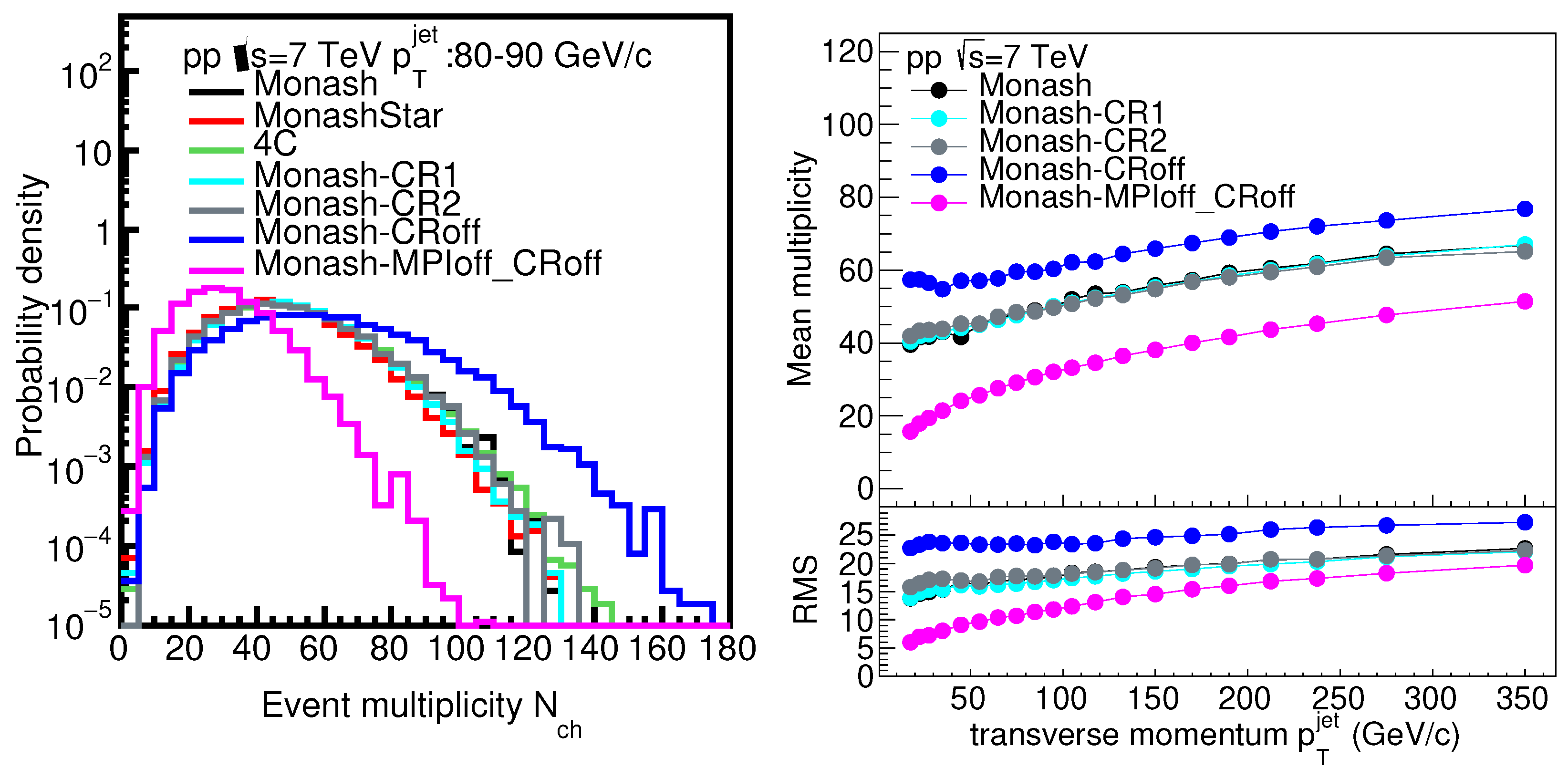
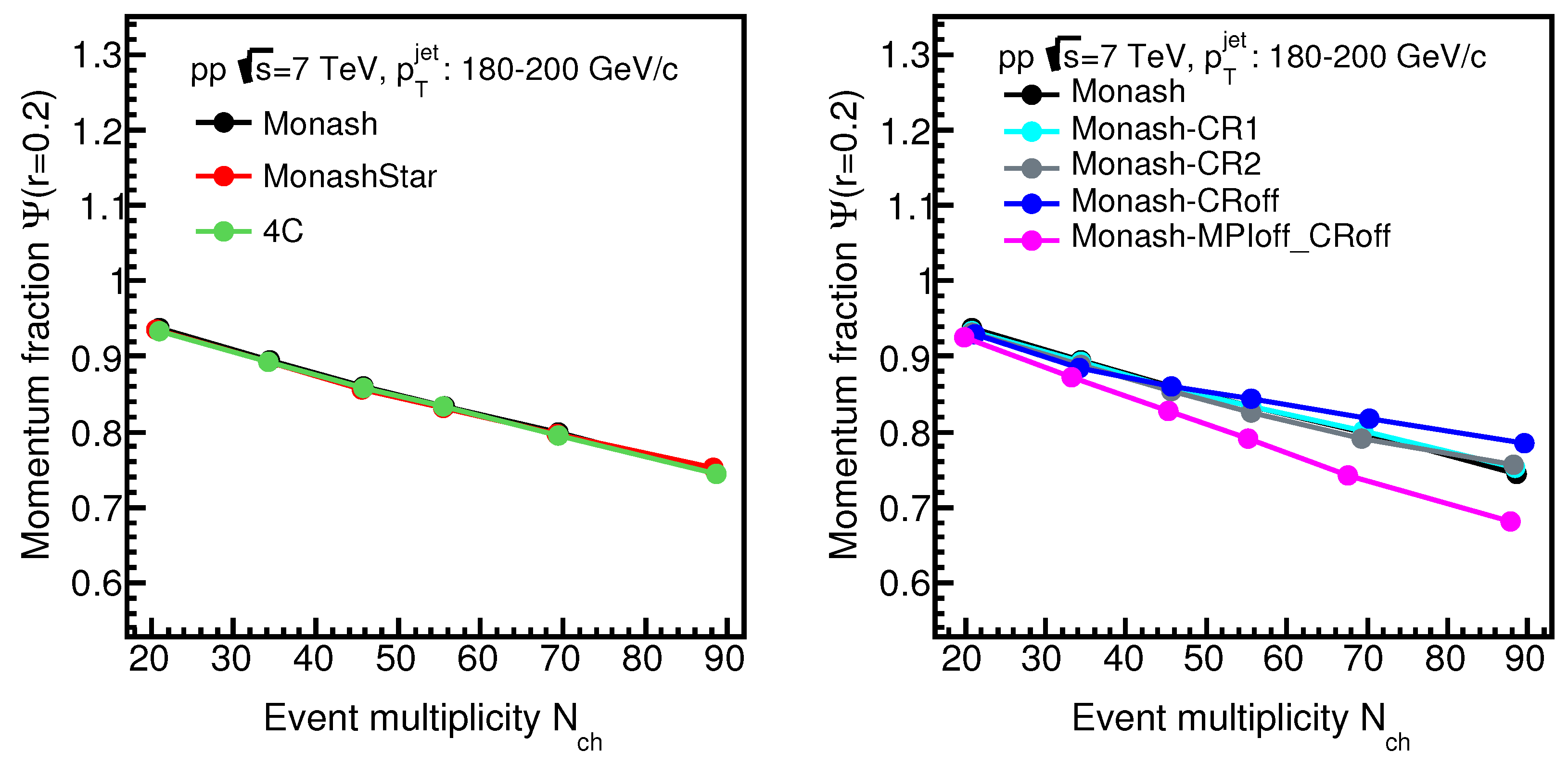
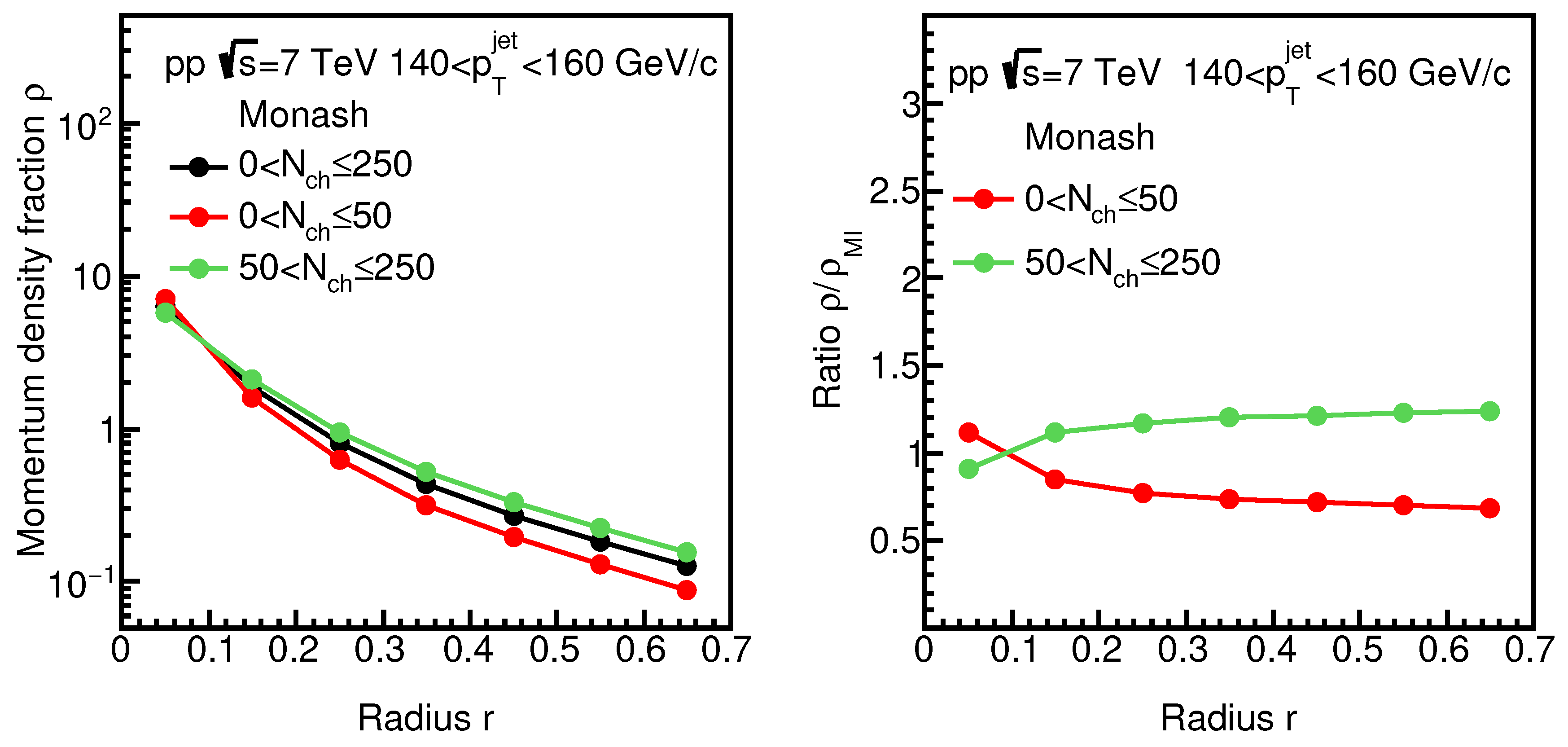
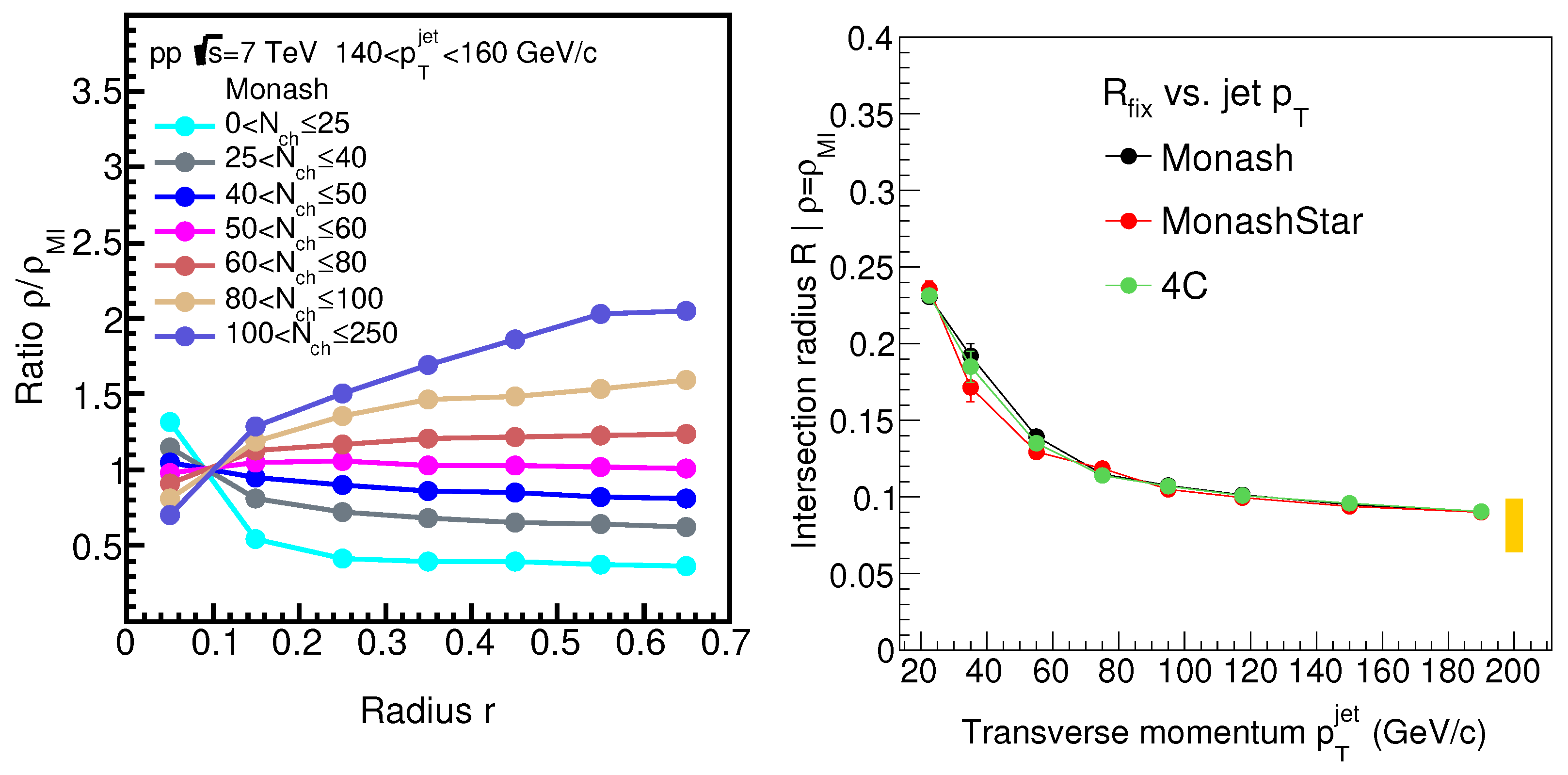
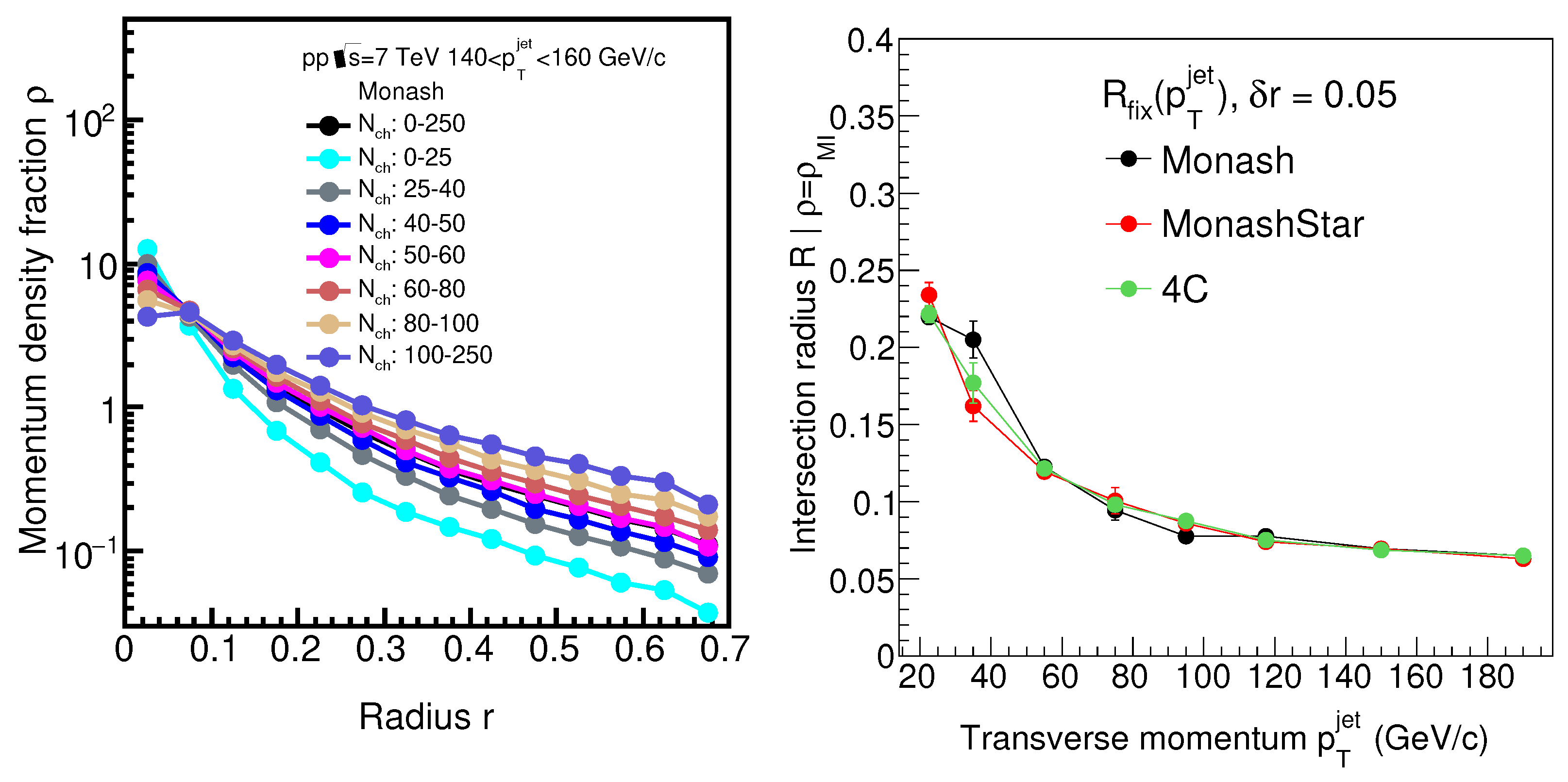

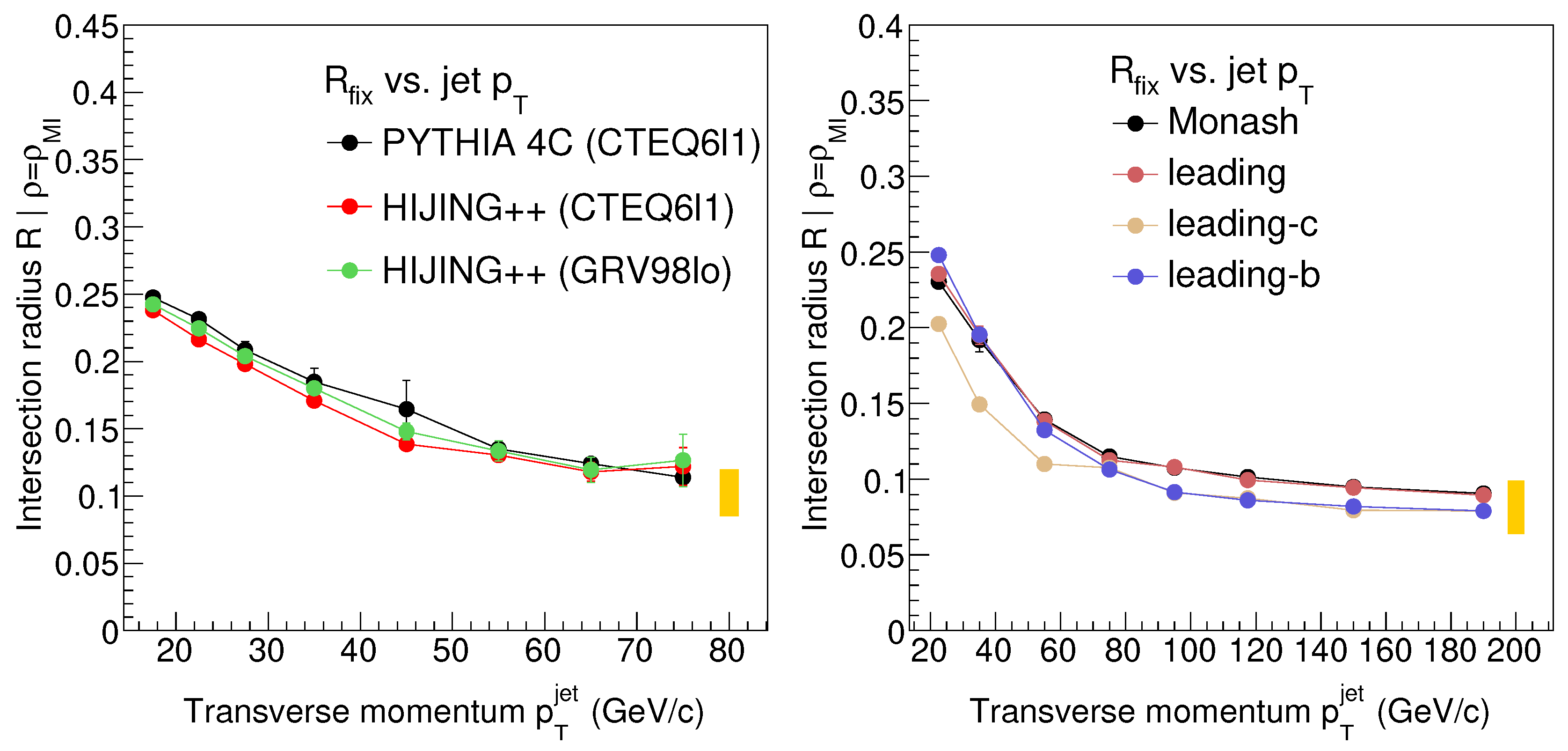
© 2019 by the authors. Licensee MDPI, Basel, Switzerland. This article is an open access article distributed under the terms and conditions of the Creative Commons Attribution (CC BY) license (http://creativecommons.org/licenses/by/4.0/).
Share and Cite
Varga, Z.; Vértesi, R.; Barnaföldi, G.G. Jet Structure Studies in Small Systems. Universe 2019, 5, 132. https://doi.org/10.3390/universe5050132
Varga Z, Vértesi R, Barnaföldi GG. Jet Structure Studies in Small Systems. Universe. 2019; 5(5):132. https://doi.org/10.3390/universe5050132
Chicago/Turabian StyleVarga, Zoltán, Róbert Vértesi, and Gergely Gábor Barnaföldi. 2019. "Jet Structure Studies in Small Systems" Universe 5, no. 5: 132. https://doi.org/10.3390/universe5050132




